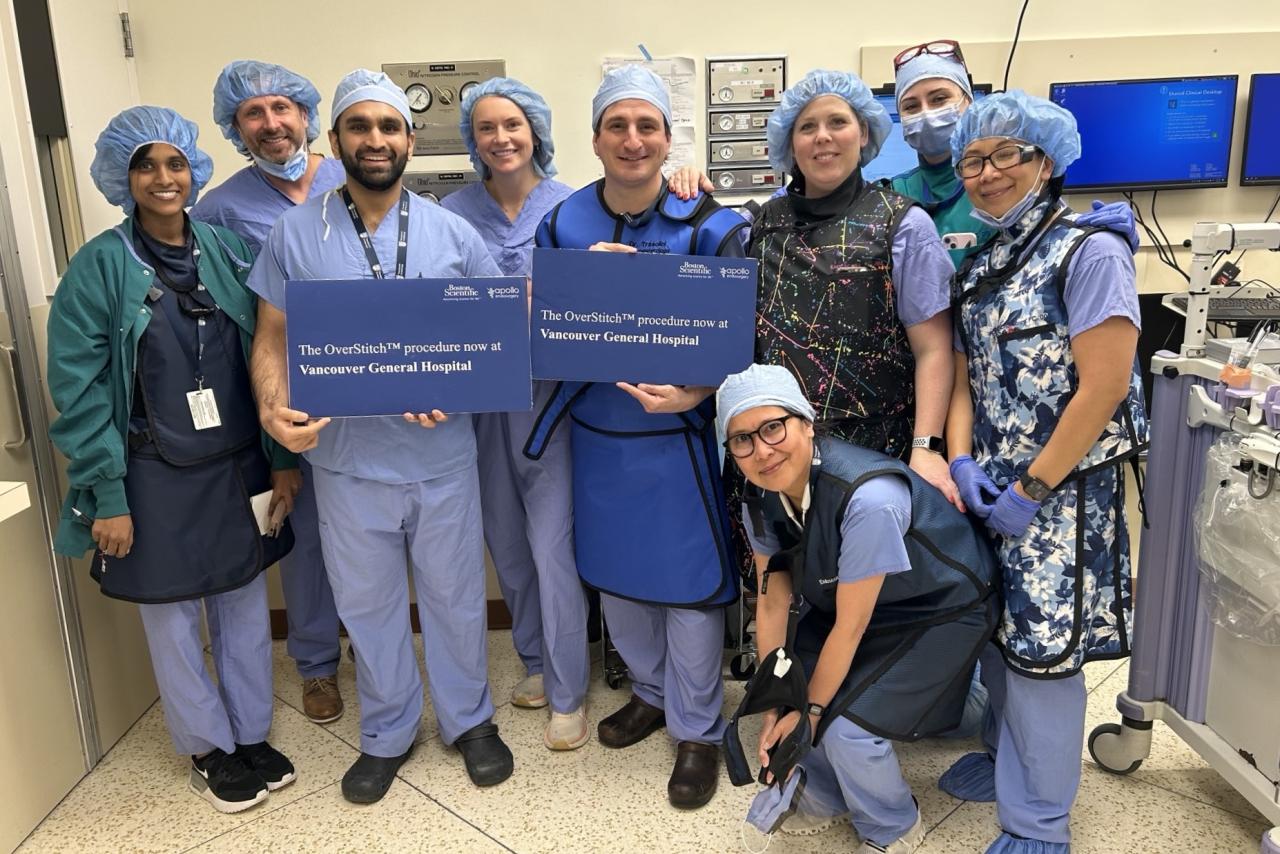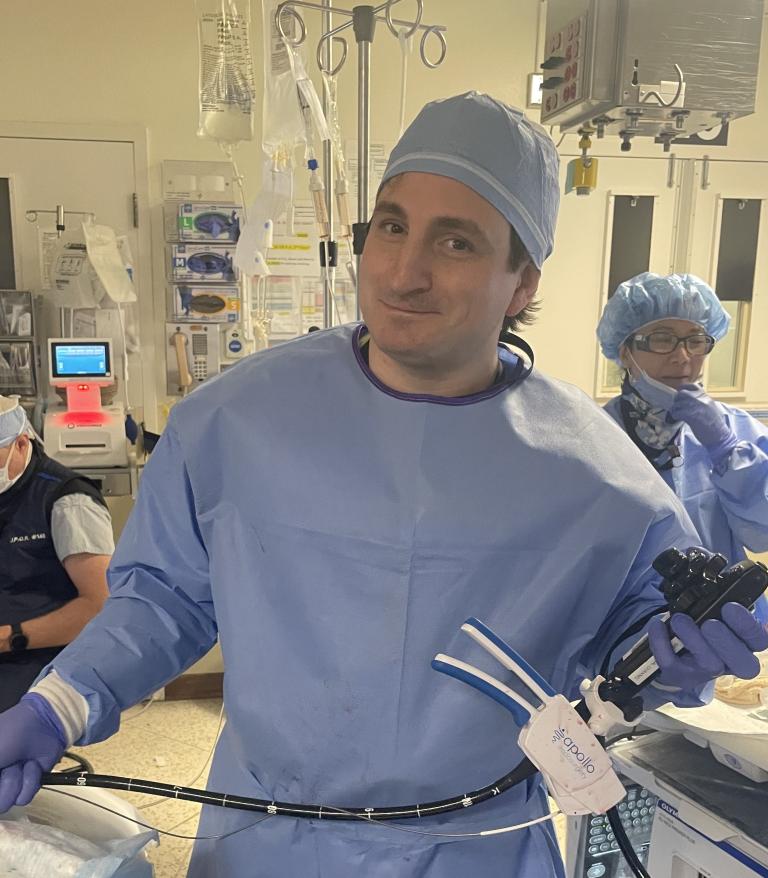Story
Overstitch procedure at VGH marks Canadian first

For the first time in the country, doctors at Vancouver General Hospital (VGH) have successfully sutured a patient using a new device called the Overstitch. It involves suturing using an endoscope, providing a secure suture and less invasive procedure than traditional surgery.
The Overstitch device was approved in Canada earlier this year and physicians at VGH are the first in the nation to use it.
“It’s really energizing for the team,” says VGH Endoscopy Program Manager Clinical Operations Manager Coreen Ng. “They can see how it makes a difference in people's lives and how the technology is helping to make that happen.”
VGH Gastroenterologist Dr. Roberto Trasolini performed the first Overstitch procedure.
“This field has been rapidly changing over the last 10 years,” says Trasolini. “With advances in endoscopy, we can see and treat more diseases of the gastrointestinal tract but have been limited in our ability to suture tissue laparoscopically. With this device It’s almost as if you were in the stomach, suturing with your hands, but at the tip of an endoscope.”
The Overstitch essentially brings two tools together at the end of the scope. It allows endoscopists to grasp tissue and pass a needle back-and-forth to be able to suture. The sutures can penetrate the full thickness of the gastrointestinal tract wall, whereas clips attach more superficially. This procedure can help avoid a more invasive surgery in some circumstances and provide a more secure closure to prevent bleeding or leaks.
The Overstitch device allows for new treatments for a variety of gastrointestinal disorders and promises a less invasive option with faster recovery compared to some traditional surgeries.
The first Overstitch patient
The first Overstitch patient, Lokesh Varshney, 40, says having the procedure was life changing.
“I am excited I’m alive,” he says. “I haven’t been able to eat or drink except through intravenous nutrition. I forgot how good water tastes.”
Varshney, a father of two young children, had been in and out of hospital for five years with complications of pancreatitis. He had a chronic leak in his small bowel and, about a year ago, had surgery to divert the flow of food away from the area. That lasted about six months and he got sick again.
“We, as a team, have been trying to fix his health issue for a long time,” says Trasolini. “It’s in a very delicate area that contains the bile duct, the pancreas and a lot of other critical organs There weren’t many good surgical options and that's when we decided that he would be the first Overstitch case.”
Varshney was under general anesthesia and Trasolini inserted the Overstitch device through his mouth and into his stomach. Trasolini then stitched the area shut to direct food away from the leak. The procedure took about 40 minutes.
Varshney is now able to drink and is gradually getting back to eating orally again after nearly a year.
Looking back and to the future
It has been no small feat for the Vancouver Coastal Health (VCH) team to get to this point. Following subspecialty training in Canada, Trasolini completed two fellowships in advanced endoscopy techniques at Beth Israel Deaconess Medical Center, followed by Brigham and Women’s Hospital in Boston, a world leader in endoscopic suturing and other cutting edge endoscopic procedures. VCH helped secure the required equipment as part of its ongoing commitment to providing the highest quality surgical and endoscopic care.
After performing the first Overstitch surgery in Canada, Trasolini travelled back to Boston with a select group of gastroenterologists and surgeons to help train them in the procedure including doctors from St Paul’s Hospital as well as from hospitals in Quebec, Ontario and Manitoba.
The Overstitch device has several applications including securing stents, closing gastrointestinal defects and other situations where tissue suturing is performed internally. It is likely to be used in an increasing number of procedures in VCH, helping dozens or, potentially, hundreds of patients every year.

“Hopefully we get a few people using this device and then we can meet the needs of patients where it could be useful in emergencies and planned procedures,” says Trasolini. “This is a tool that helps expand what can be done endoscopically as part of the already impressive surgical and endoscopic care at VCH.”


